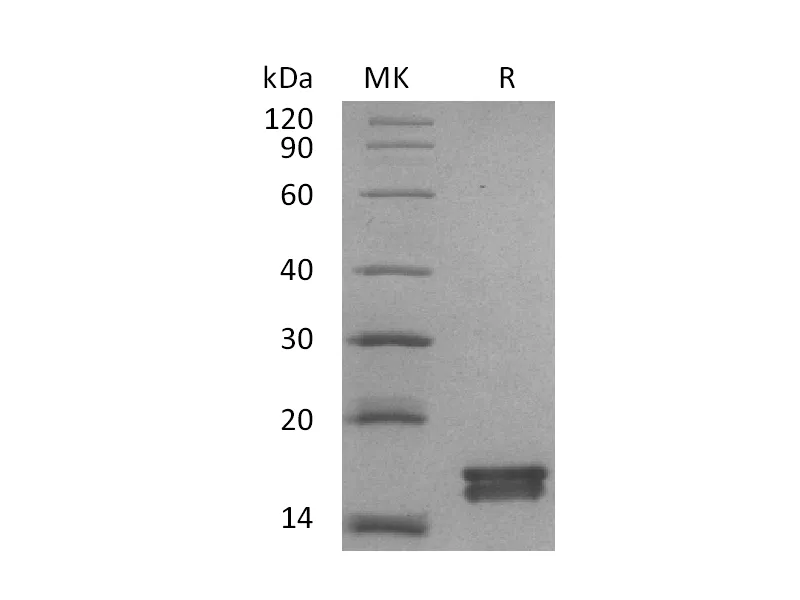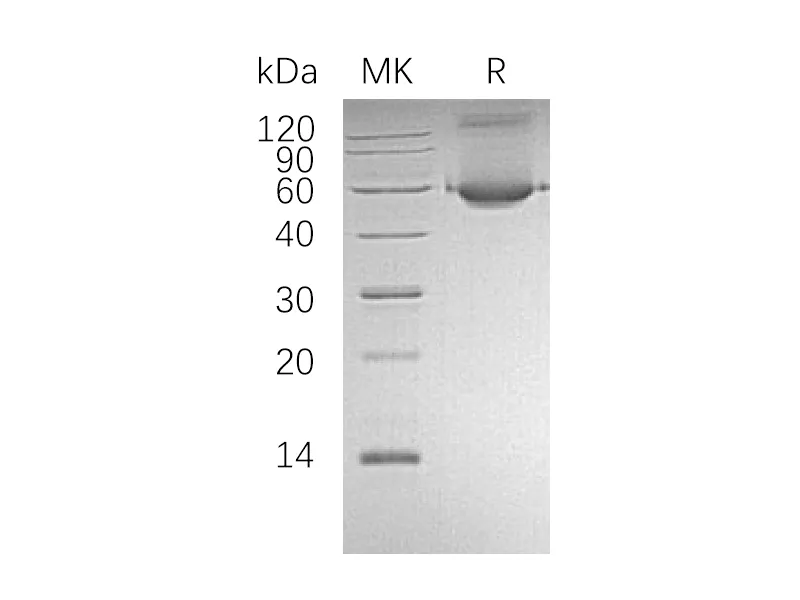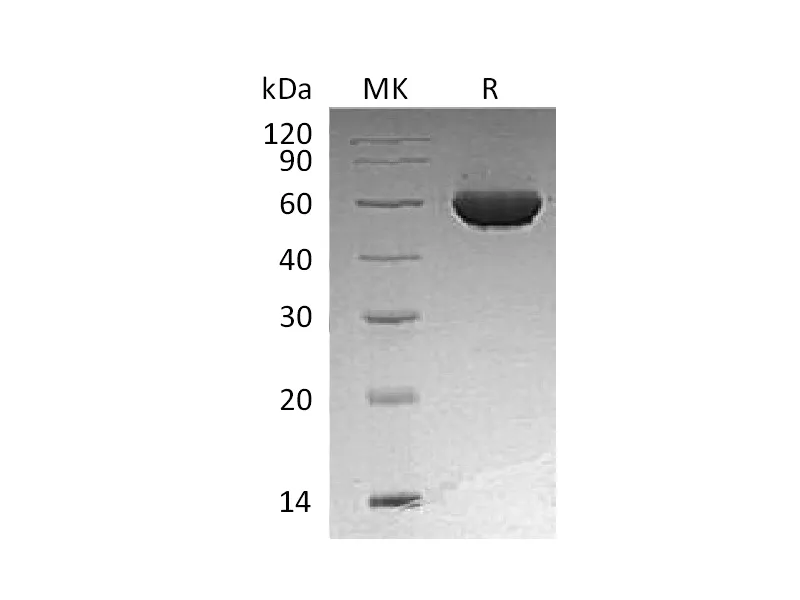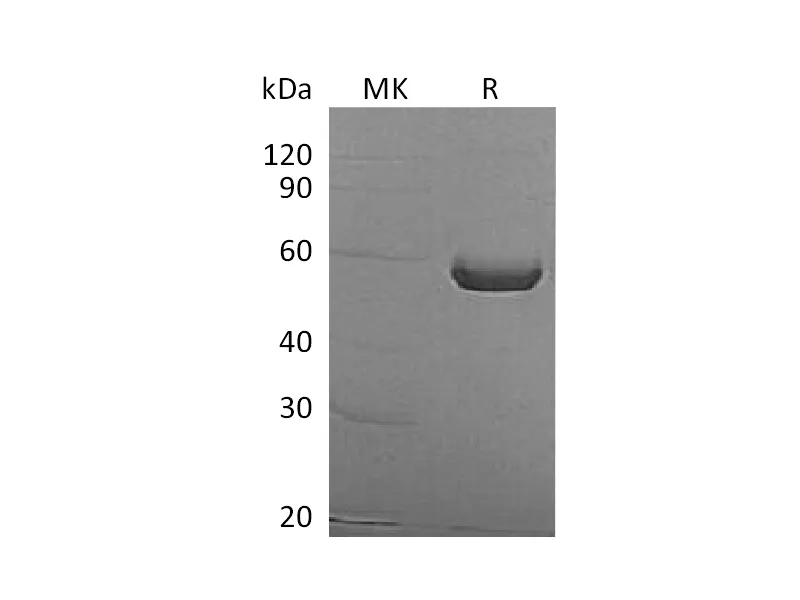Alternative Names
Protein S100-A7; Psoriasin; S100 calcium-binding protein A7; S100A7; PSOR1; S100A7C
Background
S100A7 is a 11-12 kDa member of the S100 family of EF hand calcium binding proteins. Human S100A7 shares 32% amino acid sequence identity with mouse S100A7A, the closest related protein in mouse. It is acetylated at the N-terminus and binds both calcium and zinc ions. S100A7 is up-regulated in keratinocytes of psoriasis and atopic dermatitis lesions, as well as in epithelial cells of the tongue, eye, and female genital tract. Its up-regulation can be induced by bacterial exposure, inflammatory cytokines, or epidermal barrier disruption. S100A7 supports epithelial integrity through killing E. coli by sequestration of zinc and through inducing the up-regulation of tight junction proteins. The interaction of S100A7 with RAGE promotes the migration of immune cells and the infiltration of macrophages into tumor sites.
Note
For Research Use Only , Not for Diagnostic Use.




